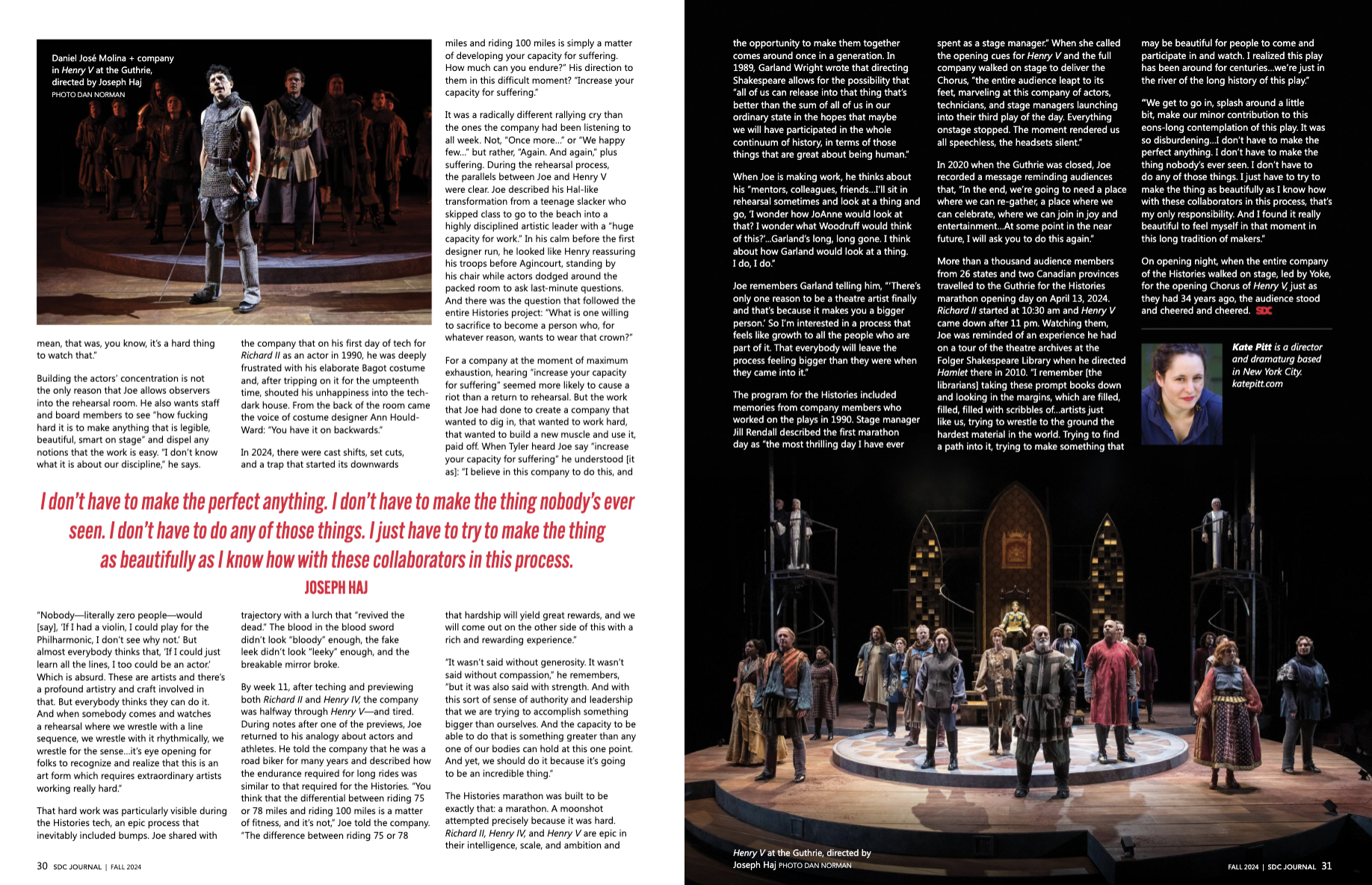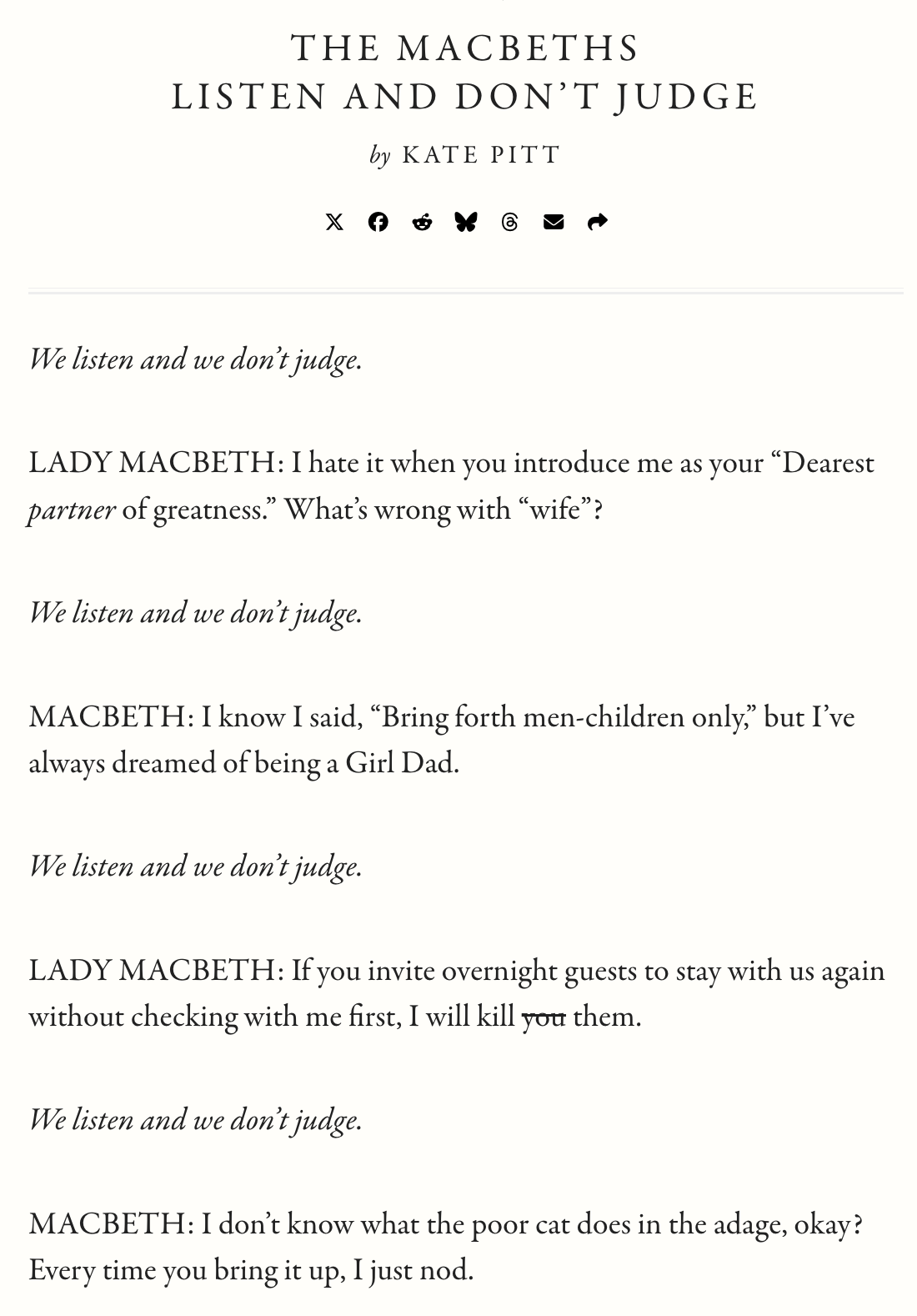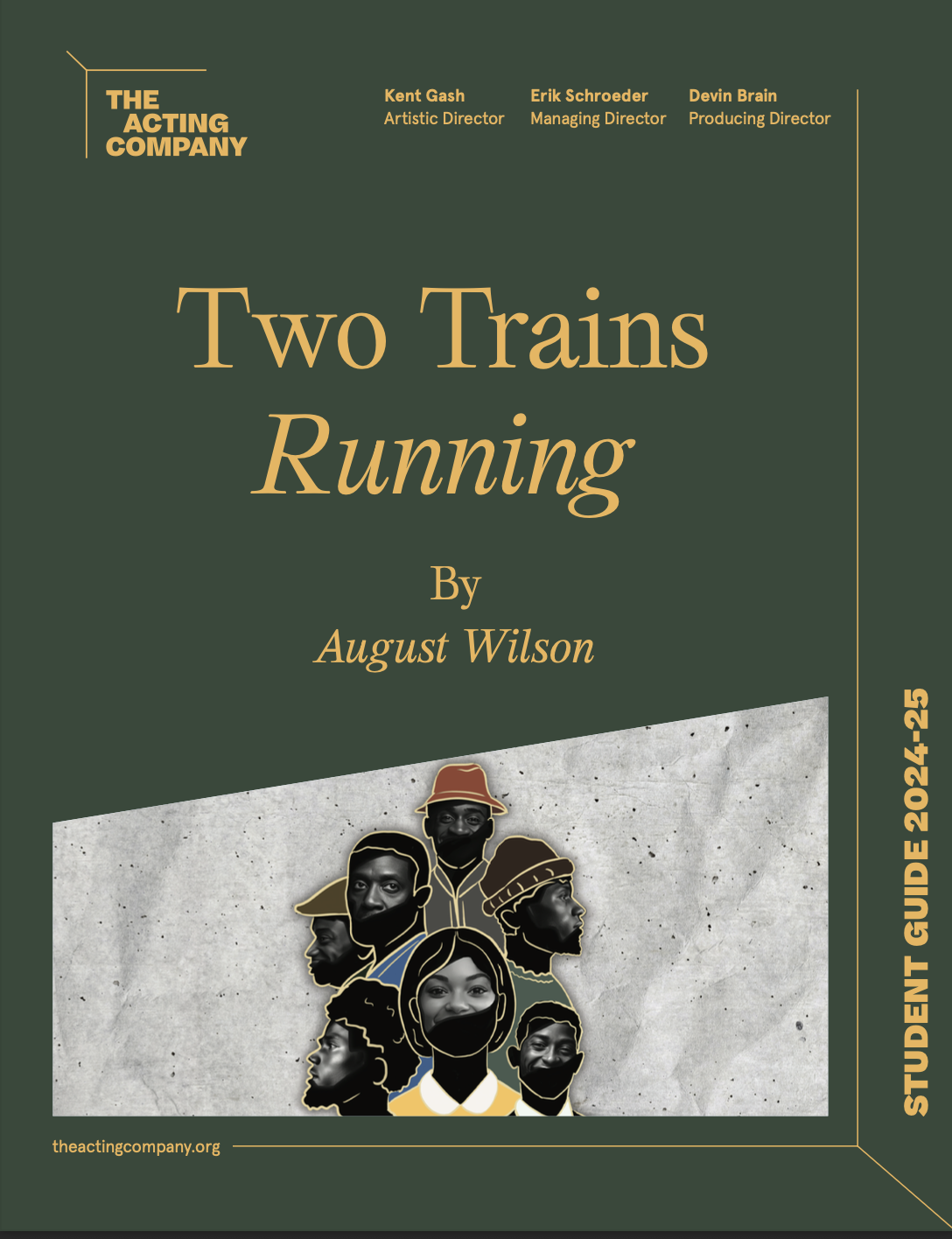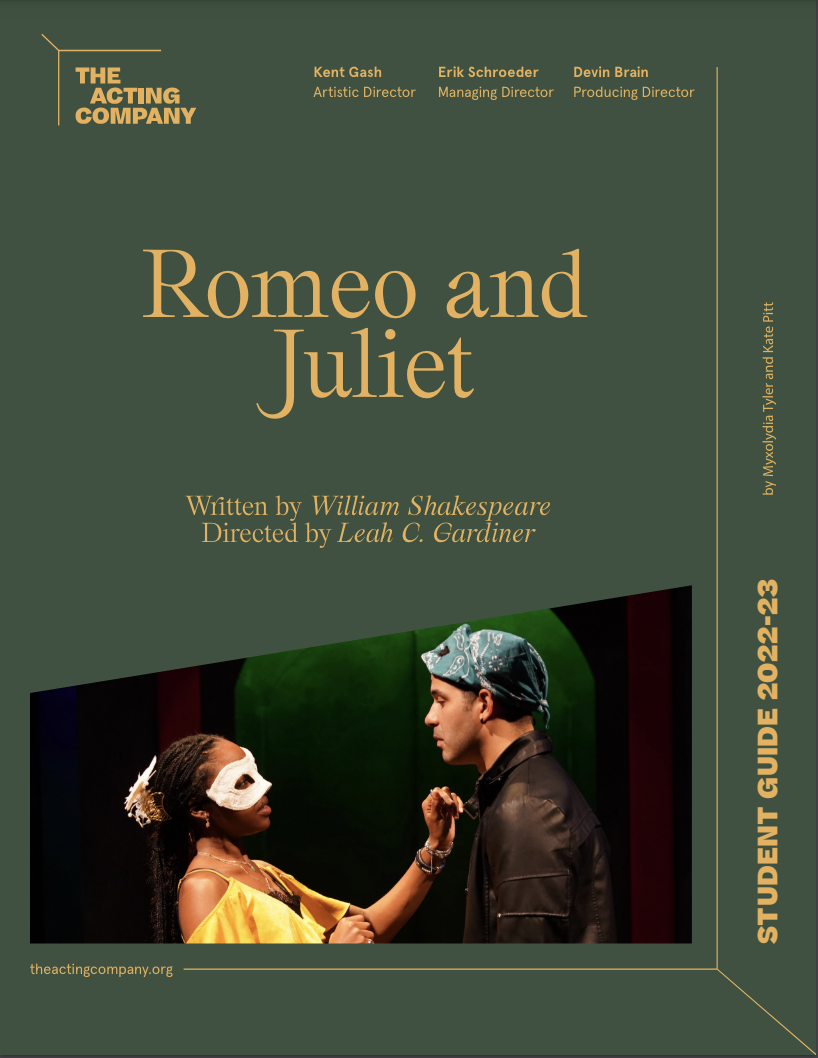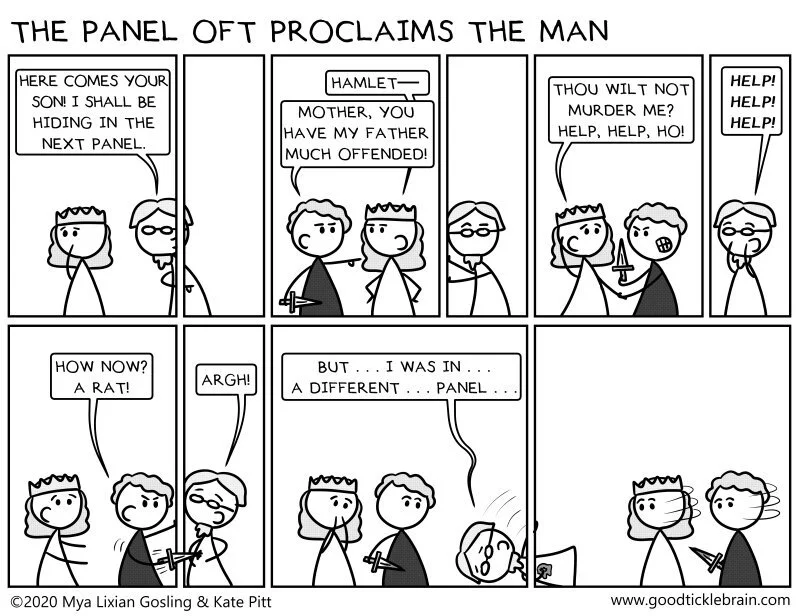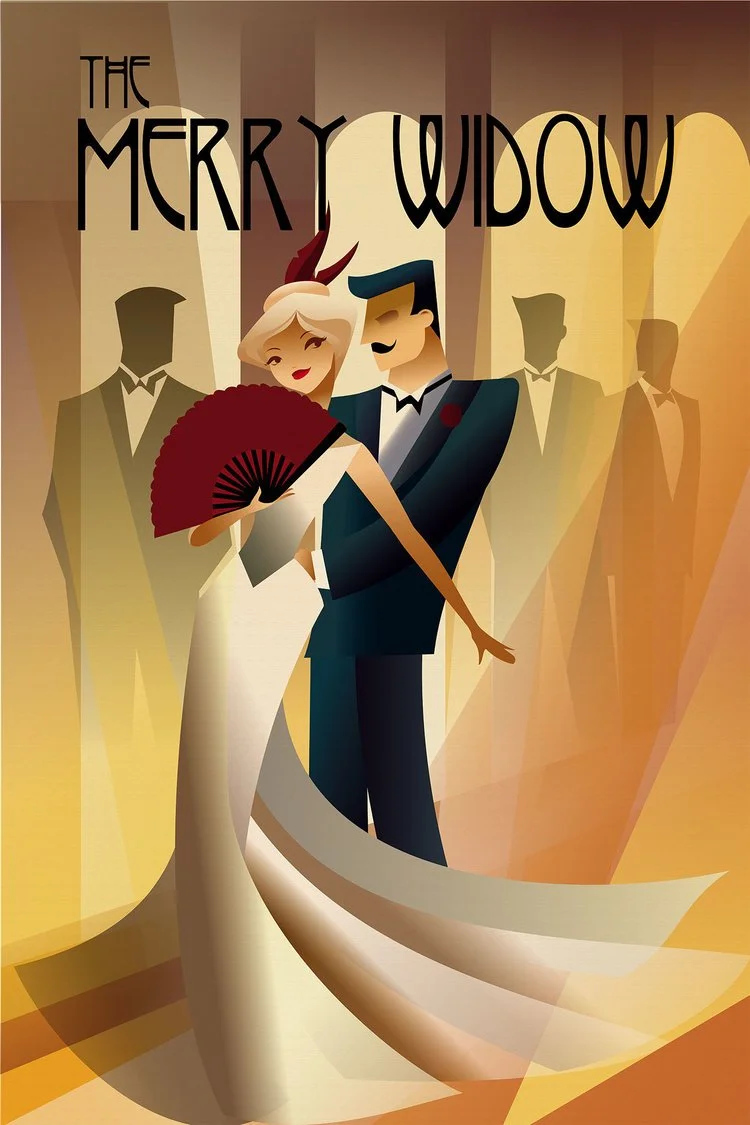SDC Journal
Substack
Acting Company Study Guides
Two Trains Running was written in the 1980s, premiered in the 1990s, and is set in the 1960s…We never learn the name of the restaurant in the play, but Eddie’s Restaurant, a real Hill District diner and favorite hangout for August Wilson and other writers, was the inspiration…Eddie’s was deemed “not historically valuable” by the Pittsburgh Urban Redevelopment Authority and demolished in 2006.
The play is Shakespeare’s shortest, possibly because it was one part of a whole evening of entertainment for law students who had been partying on their winter break since December 12 and were in high spirits by the time Comedy was performed on December 28. So many people crowded into the hall where Shakespeare’s troupe was due to perform that fights broke out before the play even started.
Shakespeare’s play unfolds over five hot summer days – Romeo and Juliet meet on Sunday night and are dead by Thursday morning – while Brooke’s poem unfolds over nine months and the lovers meet at a Christmas party…Brooke expands the story in places where Shakespeare stays silent, telling us what happens to the Nurse and Friar after the lovers’ deaths (she is banished and he becomes a hermit), and Shakespeare develops characters that Brooke only mentions in passing. Benvolio does not appear at all in Brooke’s poem and Mercutio appears only once as a party guest with very cold hands.
Alexander Dumas moved to Paris in his 20s and quickly became a successful writer with the support of his late father’s friends. He wrote over 250 books in his lifetime and serialized many of his novels including The Three Musketeers in magazines, writing in an exciting and dynamic style…Dumas’ prolific output was made possible by his collaborators who researched and wrote drafts for him to polish. Author Auguste Maquet wrote the first draft of The Three Musketeers, completed in 1844, as well as another of Dumas’ best known works, The Count of Monte Cristo, published the following year.
Odysseus addresses the men as “friends,” “companions,” and “servants.” They are both sympathizers and servers, keeping Odysseus company on his journey while doing the physical labor to make it possible. Never once in all his desperate desire to return home does Odysseus ever actually touch an oar. He is willing to face many dangers – monsters, whirlpools, and witches – but not rowing. Ultimately it is Odysseus’ men, his “friends,” who suffer the most on his journey home. One by one they are bewitched, eaten, and drowned. Not one of them survives and when Odysseus finally arrives home, he arrives alone.
Blogs
Henry VI, Part II – Saye Anything
Jack Cade, the leader of the rebellion, accuses Saye of such abominable crimes as printing, teaching grammar to children, and dressing his horse in excessively fancy horse-clothes. Saye is definitely not guilty of the first indictment, as this scene takes place in 1450 and the first books in England weren’t printed until at least twenty-five years later.
Henry VI, Part II – Saye What?
Broughton Castle [was] originally built in the 14th century and passed down in the Fiennes family since 1457 when the son of Shakespeare’s Lord Saye, William Fiennes, the 2nd Lord Saye and Sele, succeeded in right of his wife to it.
In addition to being the Fiennes family home, Broughton Castle is often used as a filming location and was the home of Gwyneth Paltrow’s character Viola de Lesseps in Shakespeare in Love.
Macbeth – Saints Have Heads
Multiple Scottish Queens used Saint Margaret’s shirt as a talisman during childbirth but only one used the Saint herself. When Mary Queen of Scots was in labor in June of 1566 she asked for the Saint’s entire head to be brought to the birthing chamber in Edinburgh Castle. Laboring under the desiccated eye of her 450-year-old predecessor was apparently a comfort…
Henry V – Perilous Arrow’s Motion
Henry apologizes for the way his face looks (not often necessary onstage) and blames his appearance on his father’s war-like distraction when he was conceived. However there is a much more straightforward explanation…twelve years earlier, he was hit in the face with an arrow.
The history of English royals surviving arrow-wounds up to this point was not great…Shakespeare depicts Henry and Hotspur gloriously fighting to the death, when in reality Hotspur was killed by an arrow to the face.
Writer and Editor, Folger production blog
Academic
This Goodly Frame: The Collaborative Theatre of Good Tickle Brain
Mya Lixian Gosling, Kate Pitt, and Annalisa Castaldo
As far as I was aware, "dramaturgy for comics" was a non-existent field. Fortunately, performance dramaturg Kate Pitt was willing to create it by collaborating with me as I began my adaptation of Hamlet. Our resulting partnership resulted in numerous discussions, debates, and revisions that shaped my interpretation of the play.
Throughout the process of creating this adaptation of Hamlet, I constantly approached my work from the perspective of a theater creator, scripting, directing, and acting a scene within the rectangular confines of a comic strip panel. Characters did occasionally "break the fourth wall" and directly address the reading audience, however everything was rooted in the conventions of a proscenium stage and comic page.
It was, ironically, the dramaturg that I had engaged to lend me textual and theatrical advice who challenged me to explore the unique possibilities of the comic format…
While I was content to be bounded in the nutshell of a traditional panel format, Kate realized I was actually the king of infinite space and should try thinking outside the box – literally.
One of her format-bending suggestions was that Polonius could be fatally stabbed not through the traditional arras, but rather through the frame separating two comic panels. Despite having worked in the medium for six years, the thought of breaching the four walls of the panels had never occurred to me. However, it was a delight to explore.
Ultimately, for the sake of storytelling clarity and comprehension, we ended up depicting the murder of Polonius in the traditional way, i.e. with an arras rather than with a panel-busting meta-commentary on the illusory structures of comic-drawing convention.
Adaptations and Translations
Measure + Dido, based on Beauty the Best Advocate (1699)
This musick is no cure for my distemper. For every note, to my enchanted ears, seem'd to sing only Isabella's beauty…
The Roman de Fauvel: Love and Counterpoint in Medieval France
Now ‘tis time the mystery to all of you must be exposed. Our story has a twist where he – Fauvel – is but a horse supposed. An equine anagram, a sham. Never mind, I’ll diagram –
Music and Satire: From the Writings of Rabelais
The good people, where are they? They’re so scarce nowadays and hard to see. Wait, I'll put my glasses on. There you are! Oh. You’re drinking.
Program Notes
M. Butterfly
Così fan tutte
David Henry Hwang’s play M. Butterfly has metamorphosed several times …[it’s] opalescence is like that of the creature itself: constantly revealing new facets as it shifts form and perspective.
While writing Così, an opera that generalizes about the flirtatious behavior of all women (the title can be roughly translated as “Thus do all women”) Mozart may have had one particular woman in mind.
A producer offered free 'Merry Widow' hats…to every female audience member. 13,000 women showed up at the theater to claim 1,000 hats, and one patron “tackled the woman next to her with a vim that would have done credit to the world's champion female wrestler…”
When Barber finally premiered on February 23, 1775, audiences hated it. According to one of Beaumarchais’ friends, the public was exhausted by the play’s “superabundance of wit.” According to Beaumarchais, newspaper publishers were out to get him.
Ellen West
La Fille du Régiment
Pericles
Ellen cares for her disease in a way she is unable to care for herself. She nurtures her hunger, preserving and guarding it against those who would seek to sate it…Ellen believes that her true self is thin, and that by keeping her belly empty, she may will her self full. She is her own whetstone and wears herself away – body, heart, and soul.
Donizetti’s librettists for La Fille du Régiment – Jules-Henri Vernoy and Jean-François Bayard – …possessed sufficiently Gallic credentials to help the Italian composer win over notoriously difficult French audiences. Vernoy was particularly well-placed for this task: he was the manager of the Opéra-Comique theater in Paris where Fille was first performed.
Despite his best efforts, Pericles cannot always keep those closest to him safe or solve the great evils of his world. He and his family must fight against the forces of nature, humans, gods, and yes, pirates, in order to come home safe at last. All he can do – all we can do – is strive to answer the question “What world is this?” and act accordingly.




